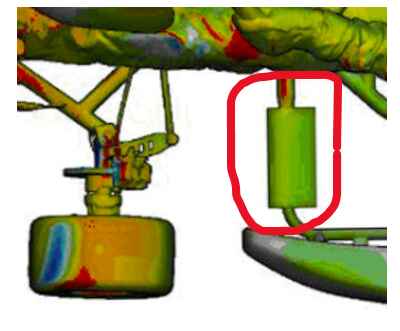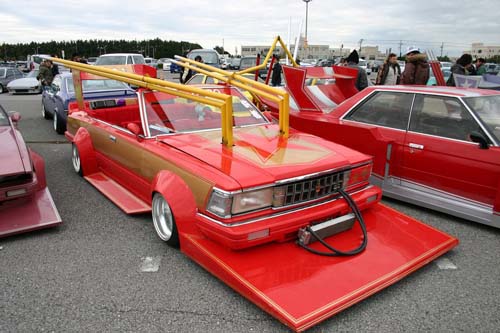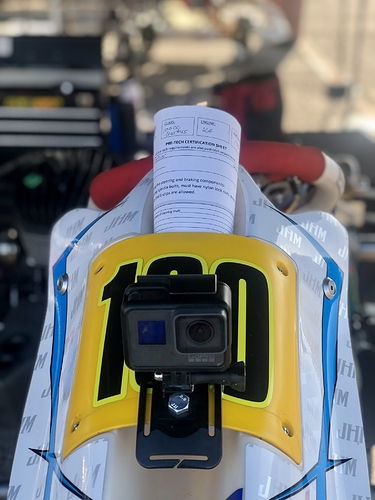That doesn’t look correct all
the pictures see to provided different data or they are using a different calibration. the front nose on top view is blue where as the front view is red.
What do all think these are? Circled in red
As an aero guy and someone who likes finding things to do inside the rules. Looks like something to redirect turbulent air. Time to bust out the rule books.
Thought the point of the new Nassau panel was to redirect air over the Driver. Looking at all four images, the color spectrum between the different panels looks to have the same forces against the driver. Only the panel is different. ??? Even then, I don’t see how channeling air through a center concave channel reduces the forces on the adjacent surfaces that the image implies. I am no Aero expert, but common sense still stands. A broad surface is a broad surface and wind does not care if there is a hot dog bun waiting to channel it when it’s wings are as broad as ever. Also, why would one side pod have more or less resistance than the other when the are basically symmetrical with reference to the air stream? Seems like there is some artistic licensing in these images.
I agree with most of that. I think the main fact is that it’s bigger so it can move more air smoothly around the driver. I saw this video about a stripped corvette in an air tunnel, and while it’s frontal area was A lot smaller compared to the vette with body panels, It also had a lot more drag. So theoretically the more front bumper/fairing you can have the better (to some extent, as there is not much sticking out on a kart)
Our rules say that you must be able to see the drivers feet. I’ve thought about making a panel out of plexiglass to provide smoother airflow around them, especially for those of us with big feet.
Aha. I was wondering how the hot dog bun would work with a GoPro.
I’m just happy to see someone keeping the camera out of the airstream. My inner aero nerd self can’t put a camera there. Even at my snails pace in 206 I like to think the aero is doing its thing and a giant camera is a huge disruption to that.
I noticed at BATB people doing all manner of trickery such as $250 M7 nassau panels and metal rear bumpers over plastic ones, all supposedly to reduce drag yet they missed the glaring elephant in the room, namely a full length floor tray. Nothing in the rules say you can’t run a full floor at events I’ve run and we even did it in 125 gearbox when I ran on road (car) circuits.
I’ve never had the facility to do a full aero study but a floor is almost certainly a larger reducer in turbulence than an M7 nassau panel and metal bumper combined.
Is there any way to quantify this without a wind tunnel and computers?
Best real world testing is just a coast down test. Throw on different fairing. Get up to a set speed, let off the throttle in the same hopefully flat spot on a straight, and coast down to a set speed. Then you need to check traces on your data sets. Not sure how accurate/precise a Mychron or Alfonso is for gps speeds. Wheel speed sensor would be preferred.
Interesting, thanks.
Some info here on coast down and CFD tests for CIK karts… not M7 specifically though. (Looks like I posted it further up… but we’ve got some recent uptick in the topic)
James, Interesting reads. Looks like the coast downs and accelerations runs are just for validating CFD. No swapping of bodywork. I’m not a facebook guy, was there any results from the 206 NCMP guys?
I know a couple of people who have run full length trays at bigger events recently so there are people doing it. I’ve also seen executions of it where the trays are mounted too soundly to the full chassis causing it not to want to flex properly so you have to be careful with the execution of said aero device.
Coming to a supernats near you?

Has anyone tried a semi-rigid material? It doesn’t need to structurally support anything right? Wouldn’t a material that bends slightly work, assuming it’s rigid enough to not sag or flex too much.
I’ve seen people toying around with them locally. One was even trying to build a diffuser, but I believe the airflow to the floor is just not adequate and the available real estate to build a proper diffuser will not work. That being said a full length floor supposedly made a difference. I believe it’s legal in WKA and USPKS, but SKUSA has wording prohibiting full length floors. Trying to get the floor sealed to the chassis frame rails to avoid air leaking and not increasing rigidity is key.
